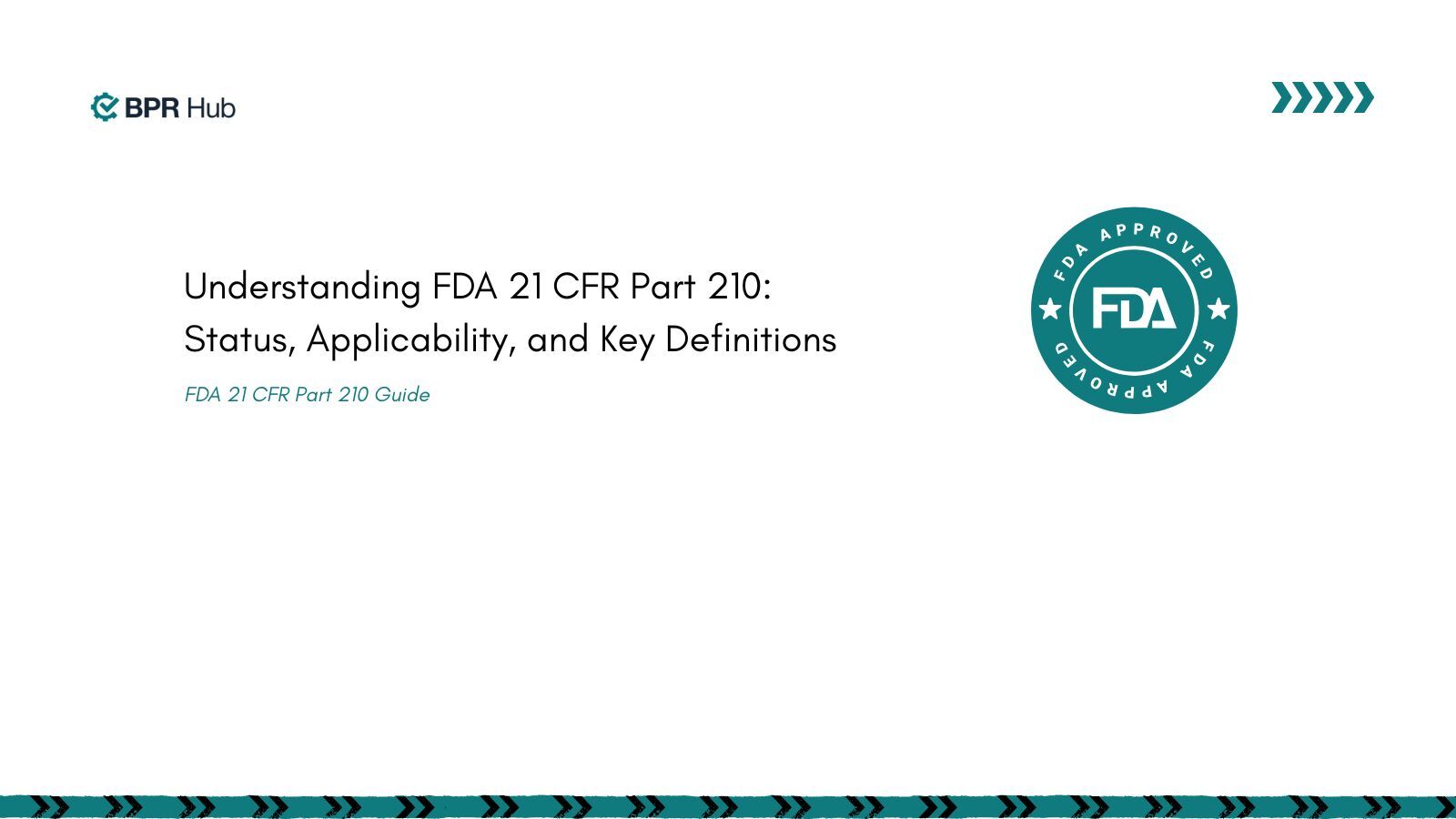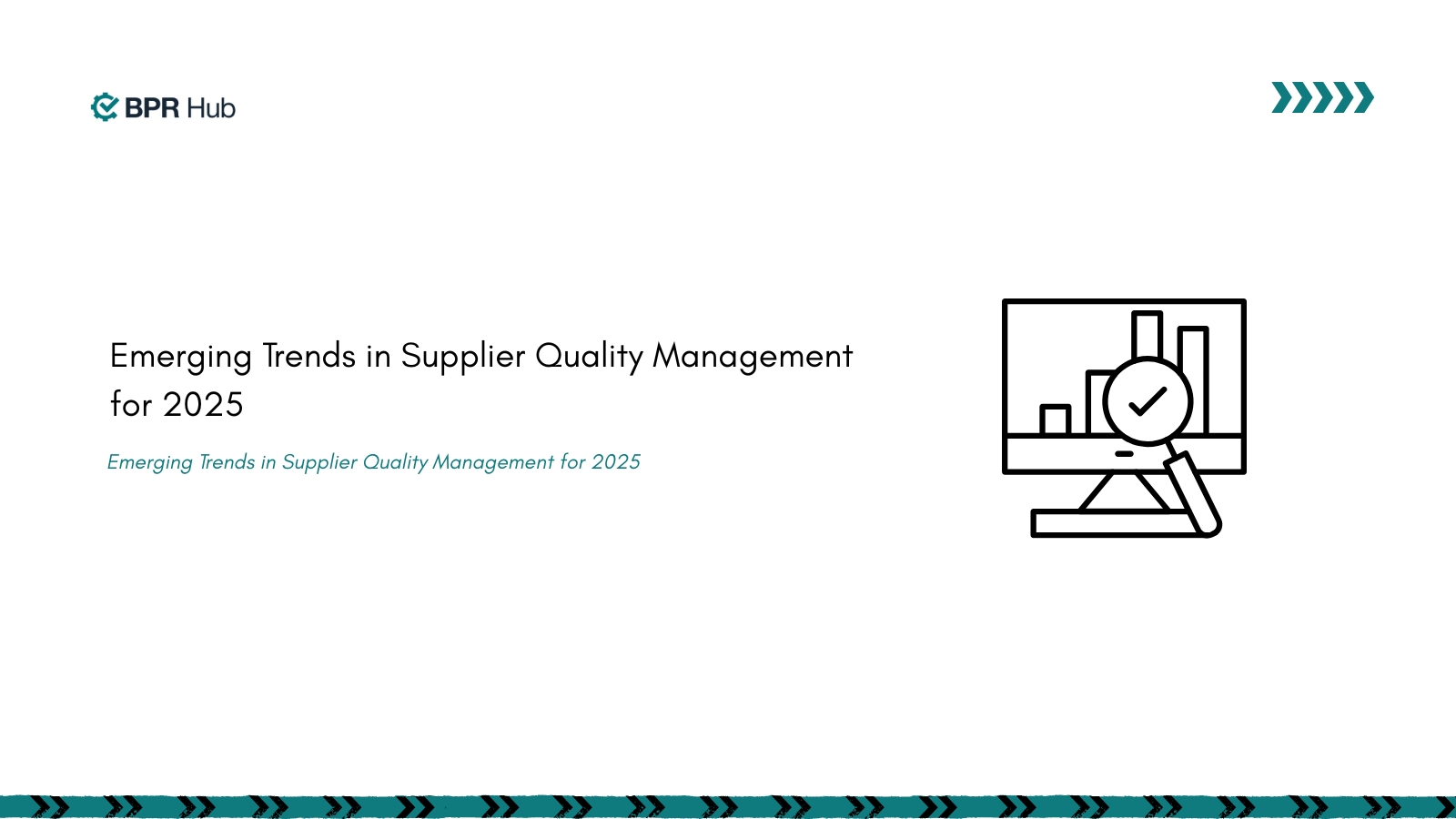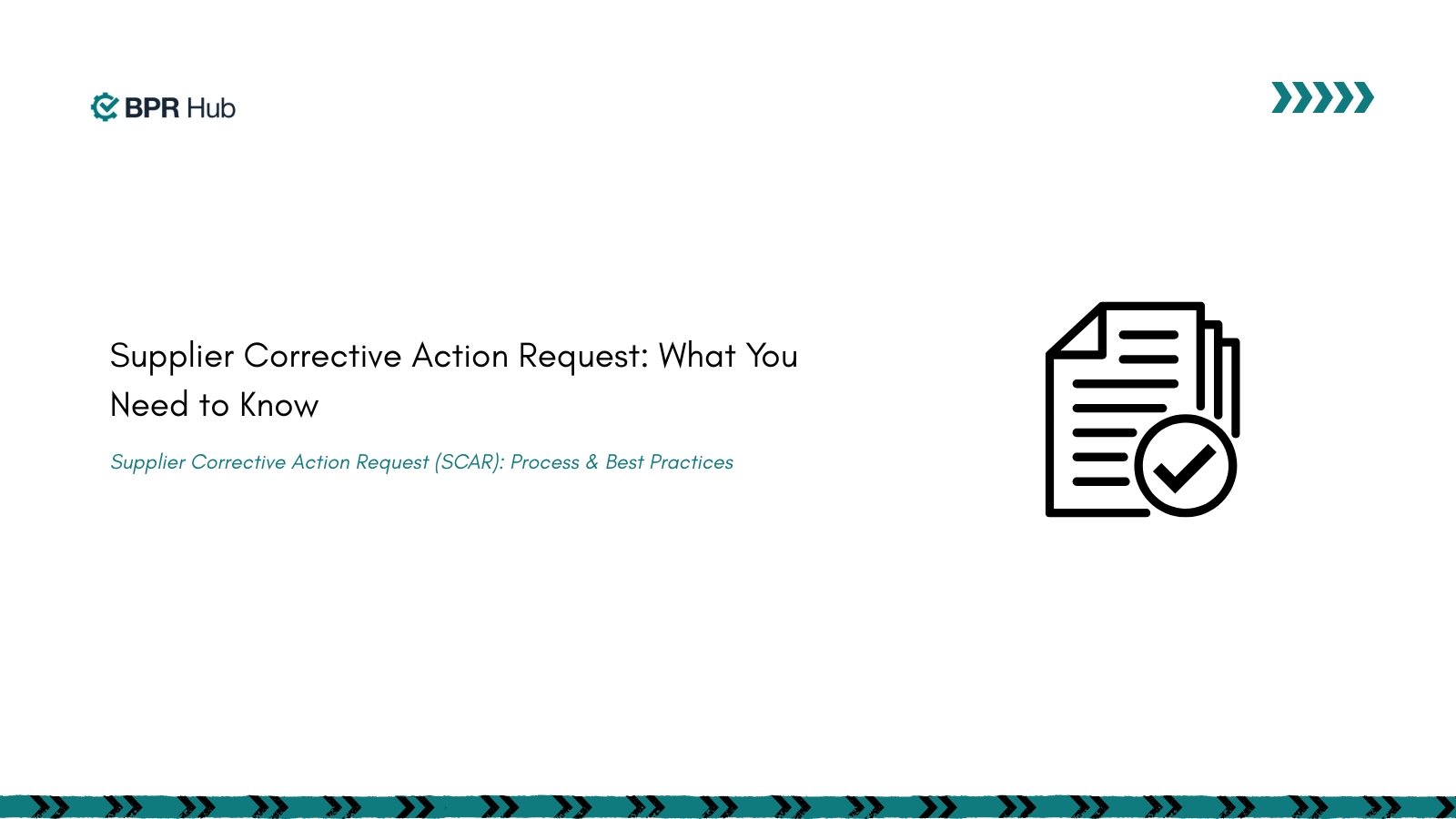Understanding 21 CFR Part 210 is crucial for any pharmaceutical organization seeking to operate in the United States market. This foundational regulation establishes the cornerstone of current good manufacturing practices for drug manufacturing, processing, packaging, and storage operations. As the FDA's primary framework governing pharmaceutical quality standards, 21 CFR Part 210 affects every aspect of drug production from raw materials to finished products.
According to FDA enforcement data, pharmaceutical manufacturing violations consistently rank among the top regulatory concerns, with documentation and manufacturing practice issues being primary citation categories. With pharmaceutical manufacturing being a global industry where regulatory compliance directly impacts patient safety and business viability, mastering these requirements is essential for sustainable operations.
This comprehensive guide explores the status, applicability, and key definitions that every pharmaceutical professional must understand to achieve and maintain compliance.
What is 21 CFR 210, and why does it matter for Drug Manufacturing Companies
21 CFR Part 210 is a critical FDA regulation that establishes the minimum current good manufacturing practices for the manufacturing, processing, packing, or holding of drugs in the United States. This regulation serves as the foundational framework that ensures pharmaceutical products meet the safety, identity, strength, quality, and purity requirements mandated by the Federal Food, Drug, and Cosmetic Act.
The regulation was established following congressional mandate in 1962 after dangerous drugs like sulfathiazole and thalidomide caused significant harm to patients, highlighting the critical need for standardized manufacturing practices. The Kefauver-Harris Amendment of 1962 strengthened the FDA's authority to ensure drug safety and efficacy. Today, 21 CFR Part 210 forms the backbone of pharmaceutical quality assurance, protecting millions of patients who depend on safe, effective medications.
Current Good Manufacturing Practices Overview
Current good manufacturing practices represent the minimum standards that pharmaceutical companies must follow to ensure their products are consistently produced and controlled according to quality standards. The "current" aspect distinguishes these practices from basic GMP by requiring manufacturers to incorporate the most advanced and up-to-date methods and technologies available in the industry.
These practices encompass comprehensive quality systems covering all aspects of pharmaceutical manufacturing, including facilities design, equipment qualification, personnel training, documentation requirements, and quality control procedures. The current good manufacturing practices framework ensures that drugs maintain their intended therapeutic effect while minimizing risks of contamination, cross-contamination, or other quality failures that could endanger patient safety.
Regulatory Authority and Legal Foundation
The FDA regulations under 21 CFR Part 210 provide the legal foundation for enforcement actions against non-compliant manufacturers. The FDA has broad authority to conduct inspections, issue warning letters, impose fines, mandate product recalls, and pursue facility closure through court action for manufacturers that fail to meet these standards.
Non-compliance with 21 CFR Part 210 renders drug products legally "adulterated" under federal law, triggering regulatory actions that can significantly impact pharmaceutical businesses. The regulation provides a clear legal framework for FDA enforcement, making compliance not just a quality imperative but a business necessity for any company operating in the pharmaceutical sector.
CFR 210 Status and Current Regulatory Framework
CFR 210 maintains an active regulatory status as a cornerstone of the FDA's pharmaceutical oversight program. The regulation is permanently codified in the Code of Federal Regulations and undergoes periodic updates to reflect advancing industry practices and emerging safety considerations.
Active Regulatory Status Under FDA Jurisdiction
21 CFR Part 210 operates under full FDA jurisdiction with mandatory compliance requirements for all drug manufacturing companies operating in or selling to the United States market. The regulation is actively enforced through routine and for-cause inspections, with the FDA conducting approximately 1,000+ pharmaceutical facility inspections annually to verify compliance.
The active status means that pharmaceutical companies must maintain continuous compliance with all provisions of 21 CFR Part 210, as violations can result in regulatory action following established FDA procedures that consider factors such as public health risk and violation severity. Companies cannot claim ignorance of requirements or request grace periods for compliance, making ongoing adherence essential for operational continuity.
Recent Updates and Regulatory Evolution
Good manufacturing practices under 21 CFR Part 210 receive regular updates to incorporate technological advances and address emerging safety concerns. The FDA periodically updates guidance documents and clarifies existing requirements through FDA guidance documents and industry communications.
These updates reflect the FDA's commitment to maintaining "current" standards that evolve with industry capabilities and scientific understanding. Pharmaceutical companies must monitor FDA updates and implement changes within specified timeframes to maintain compliance with the most recent good manufacturing practices requirements.
Integration with Broader 21 CFR Regulatory Structure
21 CFR Part 210 integrates seamlessly with other regulations in the 21 CFR framework, particularly Parts 211, 225, 226, and specialized regulations for biologics, medical devices, and other regulated products. This integration creates a comprehensive regulatory ecosystem where general principles in Part 210 support more specific requirements in complementary regulations.
The hierarchical structure means that Part 210 establishes fundamental definitions and principles, while other parts provide detailed implementation requirements for specific product types or manufacturing activities. When conflicts arise between regulations, the more specific regulation typically takes precedence over the general requirements in Part 210.
Streamline 21 CFR Part 210 Compliance - Get Started with BPR Hub Today
📍 Book a Demo
📧 hello@bprhub.com
Scope and Applicability of 21 CFR Parts 210 and 211
The 21 CFR Parts 210 and 211 regulatory framework applies broadly across the pharmaceutical industry, covering prescription and over-the-counter medications, active pharmaceutical ingredients, and finished dosage forms. Understanding the scope and applicability is essential for determining which requirements apply to specific manufacturing operations and business activities.
Which Pharmaceutical Companies Must Comply
All pharmaceutical companies involved in manufacturing, processing, packing, or holding drugs for the U.S. market must comply with 21 CFR Part 210 requirements. This includes domestic manufacturers, foreign manufacturers exporting to the United States, contract manufacturing organizations, and companies involved in pharmaceutical supply chain activities.
The regulation's broad scope ensures that every entity that could affect drug quality, safety, or efficacy operates under consistent standards. However, certain limited exemptions exist, including:
- Pharmacist compounding under specific conditions outlined in sections 503A and 503B of the FD&C Act
- Certain investigational drugs in early-phase clinical trials under specific circumstances
- Some veterinary drugs under 21 CFR Part 226
Drug Manufacturing Companies Coverage
Drug manufacturing companies of all sizes, from large multinational corporations to small specialty manufacturers, generally fall under 21 CFR Part 210 jurisdiction. The regulation does not differentiate based on company size, production volume, or market focus for most covered activities.
This comprehensive coverage ensures that patients receive consistent quality protection regardless of which company manufactures their medications. However, the FDA does provide some scaled approaches for smaller manufacturers and certain specific circumstances, as outlined in relevant guidance documents.
Pharmaceutical Products Subject to Regulation
All pharmaceutical products intended for human use in the United States must be manufactured according to 21 CFR Part 210 standards. This includes prescription medications, over-the-counter drugs, active pharmaceutical ingredients, excipients, and finished dosage forms in all delivery mechanisms, including tablets, capsules, solutions, injectables, and topical preparations.
The regulation also applies to investigational drugs entering Phase 2 and Phase 3 clinical trials, ensuring that quality standards are maintained throughout the drug development process. Phase 1 investigational products may receive certain limited exemptions from specific 21 CFR Part 211 requirements under defined circumstances, while still being subject to Part 210 foundational principles.
Industry Sectors Within the Pharmaceutical Industry
The pharmaceutical industry encompasses multiple sectors, all of which must comply with 21 CFR Part 210 when their activities involve drug manufacturing, processing, packing, or holding. These sectors include traditional pharmaceutical manufacturing, biotechnology companies producing biological drugs, contract manufacturing organizations, and pharmaceutical suppliers providing materials or services.
CGMP Manufacturing Requirements by Product Type
CGMP manufacturing requirements under 21 CFR Part 210 apply consistently across product types while allowing for appropriate flexibility in implementation based on manufacturing activity and product characteristics. While the fundamental principles remain consistent, specific implementation approaches may vary for different categories of pharmaceutical products, including small molecules, biologics, sterile products, and controlled substances.
The regulation allows for flexibility in implementation while maintaining consistent quality outcomes, recognizing that different product types may require different manufacturing approaches to achieve the same safety and efficacy goals. Companies must demonstrate that their specific approaches meet the overarching quality objectives established in Part 210.
Drug Products Classification and Coverage
Drug products are classified under 21 CFR Part 210 based on their intended use, manufacturing complexity, and regulatory risk profile. This classification system helps determine which specific requirements apply to different types of products while ensuring that all products receive appropriate quality oversight.
The classification system supports risk-based regulation, allowing the FDA to focus resources on higher-risk products while maintaining appropriate oversight of all pharmaceutical products in the market.
Exemptions and Special Considerations
21 CFR Part 210 provides specific exemptions for certain circumstances while maintaining broad coverage across the pharmaceutical industry. These exemptions are clearly defined in the regulation and related guidance documents:
- Pharmacist compounding under sections 503A and 503B
- Certain early-phase investigational products under specific conditions
- Some specialized manufacturing situations with minimal patient risk
Companies cannot self-declare exemptions but must demonstrate that their specific circumstances meet the established criteria in the regulation. Any claimed exemptions are subject to FDA review and verification, with the agency maintaining final authority over applicability determinations.
Pharmaceutical Suppliers Obligations
Pharmaceutical suppliers providing materials, components, or services to drug manufacturers have specific obligations under 21 CFR Part 210 even when they are not directly manufacturing finished drug products. These obligations ensure that supplier activities do not compromise the quality or compliance of the final pharmaceutical products.
Supplier obligations may include maintaining appropriate quality systems, providing certificates of analysis, conducting testing according to specified methods, and submitting to audits by their pharmaceutical customers or FDA inspectors.

Essential Definitions in Good Manufacturing Practices: FDA Guidelines
The good manufacturing practices FDA guidelines establish precise definitions for key terms used throughout pharmaceutical regulation and manufacturing operations. These definitions ensure consistent interpretation and application of requirements across the industry, preventing misunderstandings that could compromise compliance or product quality.
Core CGMP Compliance Terminology
CGMP compliance requires a thorough understanding of fundamental terms that form the basis of all pharmaceutical quality requirements. These core definitions establish the vocabulary that manufacturers, regulators, and quality professionals use to communicate about pharmaceutical quality standards and compliance expectations.
Quality Assurance Definitions
Quality assurance encompasses the systematic activities implemented in a quality system to ensure that quality requirements for a pharmaceutical product will be fulfilled. This includes all planned and systematic actions necessary to provide adequate confidence that a product will satisfy given requirements for quality.
Quality assurance extends beyond quality control testing to include the entire system of policies, procedures, and controls that ensure product quality throughout the manufacturing lifecycle. It represents a comprehensive approach to quality management that prevents defects rather than simply detecting them after they occur.
Quality Control Standards and Terms
Quality control refers to the sampling, testing, and examination of materials and products, and the documentation thereof, to ensure that each batch meets predetermined specifications. Quality control activities provide objective evidence that products conform to their intended quality attributes before release for distribution.
Quality control standards establish the specific tests, acceptance criteria, and procedures that manufacturers must use to verify that their products meet established quality requirements. These standards ensure consistent evaluation of product quality across different manufacturing sites and periods.
Manufacturing and Process Definitions
Manufacturing and process definitions under 21 CFR Part 210 establish a clear understanding of activities and systems involved in pharmaceutical production. These definitions distinguish between different types of manufacturing operations and establish accountability for quality outcomes at each stage of production.
Standard Operating Procedures Requirements
Standard operating procedures are established written instructions that describe specific operations, precautions, or tests where deviations might affect the identity, strength, quality, or purity of the drug product. These procedures ensure consistent execution of critical manufacturing activities regardless of which personnel perform the work.
Standard operating procedures must be comprehensive, current, and readily accessible to personnel performing the described activities. They serve as the primary mechanism for transferring quality requirements into practical manufacturing operations while providing accountability for compliance with established procedures.
Process Control Terminology
Process control encompasses the systems and procedures used to ensure that manufacturing processes consistently produce products meeting predetermined quality attributes. Process control includes both in-process monitoring and final product testing to verify that manufacturing operations achieve their intended outcomes.
Process control terminology defines the various types of controls, monitoring activities, and corrective actions that manufacturers must implement to maintain consistent product quality. This terminology provides the foundation for developing and implementing effective process control strategies.
Batch Records Documentation Standards
Batch records are the complete compilation of records associated with the manufacture of a specific batch of drug product. These records provide comprehensive documentation of all manufacturing activities, test results, and quality decisions for each batch produced, creating an auditable trail of manufacturing compliance.
Batch records documentation standards specify the minimum information that must be recorded, the format for recording information, and the procedures for maintaining and storing these critical manufacturing records. Proper batch record documentation is essential for demonstrating compliance with 21 CFR Part 210 requirements.
Quality System Components and Definitions
Quality system components under 21 CFR Part 210 include the organizational structure, processes, procedures, and resources needed to implement quality management. These components work together to ensure that pharmaceutical products consistently meet their intended quality requirements.
Pharmaceutical Quality Management System Elements
Pharmaceutical quality management system elements encompass the comprehensive set of management processes, procedures, and resources dedicated to achieving and maintaining product quality. These elements integrate quality planning, quality control, quality assurance, and quality improvement into a unified management approach.
The pharmaceutical quality management system provides the framework for managing quality risks, ensuring compliance with regulatory requirements, and continuously improving manufacturing performance. It represents the systematic approach that companies use to achieve consistent product quality and regulatory compliance.
Change Control Procedures
Change control procedures establish a systematic approach for evaluating, approving, implementing, and monitoring changes that could affect product quality, safety, or efficacy. These procedures ensure that all changes are thoroughly evaluated before implementation and that their effects are monitored after implementation.
Change control procedures must address changes to facilities, equipment, processes, procedures, specifications, and other elements that could impact product quality. Effective change control prevents unintended consequences while enabling continuous improvement in manufacturing operations.
CGMP Regulations Implementation Requirements
CGMP regulations implementation requires a comprehensive understanding of quality standards and manufacturing regulations that govern pharmaceutical operations. Implementation involves establishing systems, procedures, and controls that ensure consistent compliance with all applicable requirements while maintaining flexibility to adapt to changing business needs and regulatory expectations.
Quality Standards Establishment
Quality standards establishment forms the foundation of CGMP regulations compliance, requiring manufacturers to define clear, measurable criteria for all aspects of product quality. These standards must be based on scientific principles, regulatory requirements, and intended product use, providing objective benchmarks for evaluating manufacturing performance.
Quality standards must address all critical quality attributes, including identity, strength, purity, quality, and safety characteristics that products are represented to possess. The standards must be achievable through available manufacturing technology while providing adequate margin for normal manufacturing variation and analytical uncertainty.
Manufacturing Regulations Compliance Framework
The manufacturing regulations compliance framework provides a systematic approach for implementing and maintaining adherence to 21 CFR Part 210 requirements throughout manufacturing operations. This framework integrates quality management principles with specific regulatory requirements to create comprehensive compliance systems.
The compliance framework must address organizational responsibilities, documentation requirements, training programs, corrective and preventive action systems, and performance monitoring activities that ensure consistent regulatory compliance. Companies must demonstrate that their framework effectively prevents, detects, and corrects compliance deviations.
Achieving FDA Compliance Under 21 CFR Part 210
FDA compliance under 21 CFR Part 210 requires systematic implementation of comprehensive quality systems that address all aspects of pharmaceutical manufacturing operations. Achieving compliance involves establishing robust procedures, training qualified personnel, and maintaining thorough documentation that demonstrates consistent adherence to regulatory requirements.
Building Compliant Quality Systems
Building compliant quality systems requires integration of 21 CFR Part 210 principles with practical manufacturing operations, creating systems that ensure regulatory compliance while supporting efficient production. These systems must be designed to prevent quality problems rather than simply detect them after they occur.
Compliant quality systems include document control procedures, training management systems, corrective and preventive action processes, change control mechanisms, and performance monitoring systems. Similar to comprehensive quality management systems used in other industries, pharmaceutical quality systems must integrate all organizational activities that affect product quality.
Documentation and Record-Keeping Requirements
Documentation and record-keeping requirements under 21 CFR Part 210 mandate comprehensive documentation of all activities that could affect product quality, safety, or efficacy. This documentation provides the evidence that FDA inspectors use to verify compliance with regulatory requirements.
Documentation requirements include batch records, equipment logs, training records, investigation reports, and quality agreements with suppliers and contractors. Effective documentation control practices ensure that all required records are created, maintained, and readily available for regulatory review.
Personnel Training and Qualification Standards
Personnel training and qualification standards ensure that all individuals involved in pharmaceutical manufacturing possess the knowledge and skills necessary to perform their assigned duties in compliance with 21 CFR Part 210 requirements. Training programs must address both general regulatory principles and specific job-related responsibilities.
Training programs must include initial qualification training, ongoing competency verification, and regular updates to address regulatory changes and new job requirements. Companies must maintain comprehensive training records that demonstrate personnel qualifications and ongoing competency.
Relationship Between Parts 210 and 211
The relationship between 21 CFR Parts 210 and 211 creates a comprehensive regulatory framework where Part 210 establishes fundamental principles and definitions while Part 211 provides detailed implementation requirements for finished pharmaceutical products. Understanding this relationship is essential for developing complete compliance programs.
Complementary Regulatory Structure
The complementary regulatory structure between Parts 210 and 211 ensures comprehensive coverage of pharmaceutical manufacturing requirements without unnecessary duplication. Part 210 provides the broad foundation, while Part 211 offers specific implementation guidance for finished drug products.
Part 210 focuses on establishing minimum current good manufacturing practices applicable to all drugs, while Part 211 delves into detailed requirements for specific manufacturing activities like equipment design, personnel qualifications, and production controls. Together, they create a complete regulatory framework for pharmaceutical manufacturing.
Cross-References and Interdependencies
Cross-references and interdependencies between Parts 210 and 211 require manufacturers to consider both regulations when developing compliance programs. When conflicts arise between the regulations, the more specific requirements in Part 211 typically supersede the general principles in Part 210.
The interdependent structure means that compliance with Part 210 alone is insufficient for finished pharmaceutical products, which must also meet the detailed requirements in Part 211. Companies must integrate both regulations into unified compliance systems that address all applicable requirements.
How BPR Hub Helps
BPR Hub revolutionizes 21 CFR Part 210 compliance for pharmaceutical manufacturers through an integrated platform that automates compliance tasks while streamlining quality management processes. The platform's comprehensive approach ensures consistent adherence to current good manufacturing practices requirements.
BPR Hub's advanced document management system integrates 21 CFR Part 210 requirements with comprehensive quality systems, creating seamless workflows that prevent compliance gaps while reducing administrative burden. The platform's intelligent analysis capabilities help identify potential compliance issues before they become regulatory violations.
The solution supports pharmaceutical manufacturers in maintaining compliance with good manufacturing practices and FDA guidelines through automated monitoring, real-time alerts, and comprehensive audit trails that demonstrate regulatory adherence. BPR Hub's integrated approach particularly benefits organizations managing complex pharmaceutical quality systems across multiple manufacturing sites and product lines.
Automate CGMP Compliance & Stay Audit-Ready—Book Your BPR Hub Demo Now
📍 Book a Demo
📧 hello@bprhub.com
Key Takeaways
→ 21 CFR Part 210 establishes the fundamental framework for current good manufacturing practices in pharmaceutical manufacturing, defining minimum requirements that ensure drug safety, identity, strength, quality, and purity
→ The regulation applies broadly to pharmaceutical companies involved in manufacturing, processing, packing, or holding drugs for the U.S. market, with specific exemptions clearly defined in the regulation and related guidance documents
→ 21 CFR Part 210 provides essential definitions and terminology that form the foundation for all pharmaceutical quality requirements, ensuring consistent interpretation across the industry
→ The regulation works complementarily with 21 CFR Part 211 to create comprehensive coverage, with Part 210 establishing principles and Part 211 providing detailed implementation requirements for finished drug products
→ FDA compliance under 21 CFR Part 210 requires systematic implementation of quality systems, comprehensive documentation, and qualified personnel to maintain continuous regulatory adherence
→ Non-compliance consequences include regulatory actions such as warning letters, recalls, fines, and potential facility shutdowns, following established FDA enforcement procedures that consider public health risk and violation severity
FAQ
Q. What is the difference between 21 CFR Part 210 and 211?
21 CFR Part 210 establishes the fundamental framework and definitions for current good manufacturing practices applicable to all drugs, while 21 CFR Part 211 provides detailed, specific requirements for finished pharmaceutical products, including equipment, personnel, production controls, and labeling. Part 210 focuses on broad principles and terminology, whereas Part 211 offers actionable implementation requirements. When conflicts arise between the regulations, Part 211's specific requirements typically supersede Part 210's general principles for finished drug products.
Q. Who must comply with 21 CFR Part 210 requirements?
All pharmaceutical companies involved in manufacturing, processing, packing, or holding drugs for the U.S. market must comply with 21 CFR Part 210, with specific exemptions clearly defined in the regulation. This includes domestic manufacturers, foreign exporters to the United States, contract manufacturing organizations, and pharmaceutical suppliers providing materials or services that could affect drug quality. Limited exemptions exist for pharmacist compounding under specific conditions, certain early-phase investigational products, and some specialized circumstances as outlined in FDA guidance.
Q. What are the key definitions in 21 CFR Part 210?
Key definitions in 21 CFR Part 210 include "batch" (a specific quantity of drug with uniform characteristics), "component" (any ingredient used in drug manufacturing), "drug product" (finished dosage form containing active ingredients), and "Act" (referring to the Federal Food, Drug, and Cosmetic Act). These definitions establish the precise terminology used throughout pharmaceutical regulation, ensuring consistent interpretation of quality requirements, manufacturing processes, and regulatory compliance expectations across the industry.
Q. How does 21 CFR Part 210 apply to pharmaceutical manufacturing?
21 CFR Part 210 applies to pharmaceutical manufacturing by establishing minimum current good manufacturing practice requirements for all activities involving drug manufacturing, processing, packing, and holding. The regulation ensures that drugs meet safety requirements and possess the identity, strength, quality, and purity characteristics they claim. It provides the legal framework for FDA enforcement actions and requires manufacturers to implement comprehensive quality systems covering facilities, equipment, personnel, and documentation throughout the manufacturing lifecycle.
Q. What are the penalties for non-compliance with 21 CFR Part 210?
Non-compliance with 21 CFR Part 210 can result in drugs being declared legally "adulterated," triggering regulatory actions including FDA warning letters, product recalls, civil money penalties, and potential criminal prosecution. The FDA follows established enforcement procedures that consider factors such as public health risk and violation severity. Companies may face facility shutdowns, loss of manufacturing privileges, and significant financial penalties. The FDA can conduct inspections and impose corrective actions based on established regulatory processes.
Get insights that help you minimize risks and maximize profits.
Dive deeper into manufacturing compliance with our free resources.
We get it, compliance can get tough.
Here are some additional resources to help.
We get it, compliance can get tough. Here are some additional resources to help.
Get updates in your inbox

.svg)
%20(1).svg)





%20(1).svg)

.avif)

